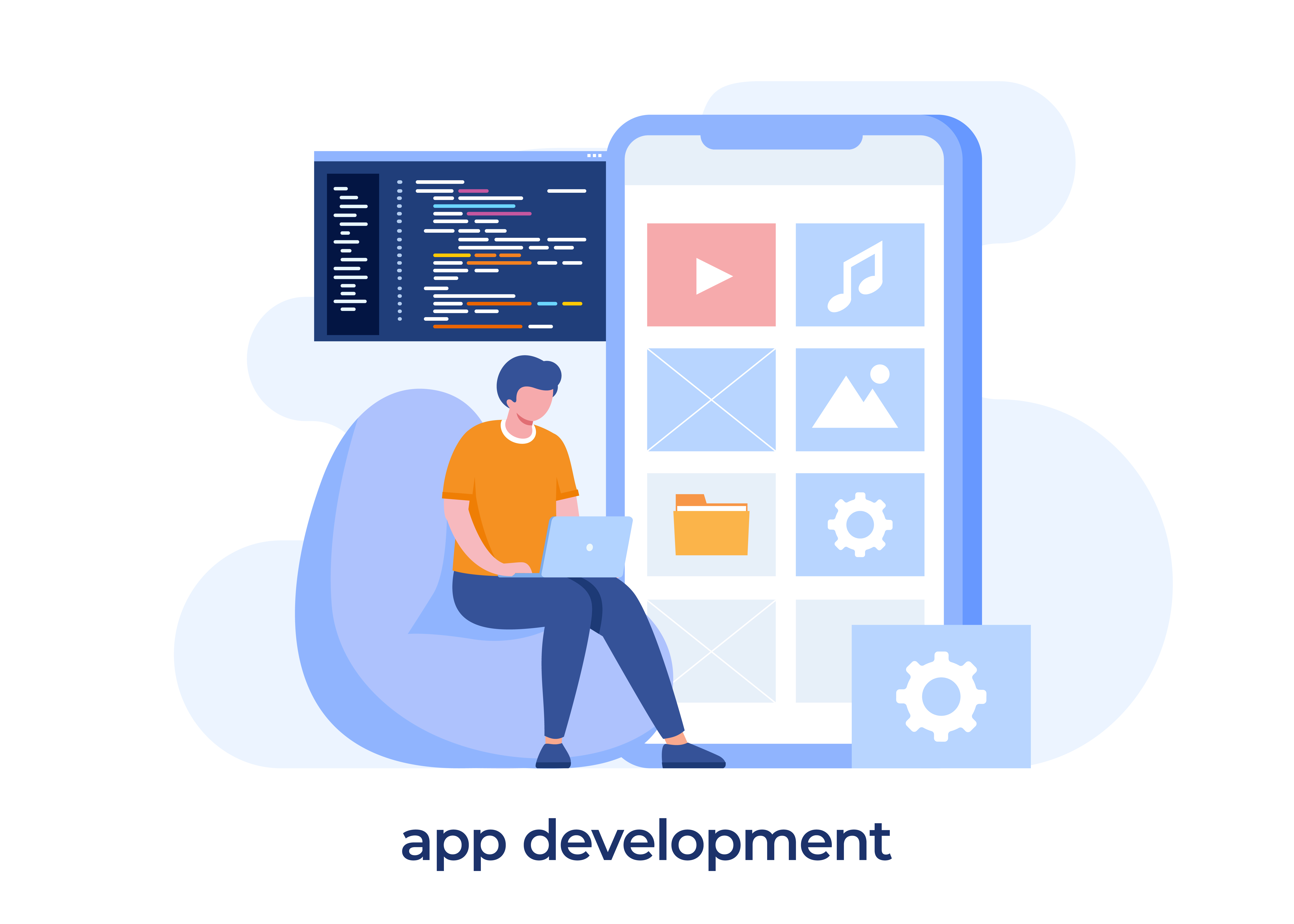Often, a potential customer will visit your company’s website before visiting any other site. It’s your online store, your main way to market your business, and a very important way to get sales and help. You need to keep up with the latest developments to make sure it works well. New technologies and changing user expectations are always changing the web development landscape. This article looks at the most important trends in web development services that are changing the digital world.
We will talk about how AI is changing the way websites are made, why progressive web apps are becoming more important, and how new architectures are making sites faster and safer. You can stay ahead of the competition by understanding these trends and making smart choices.
AI and ML are Transforming Web Development Services
AI (Artificial Intelligence) and ML (Machine Learning) are no longer just ideas from science fiction; they are real tools that are changing how web development services work. Artificial Intelligence is making web services smarter, faster, and better by doing things like automating coding and creating personalised user experiences.
Build Your Website With Professionals
AI-Powered Development and Testing
One of the most important effects of AI is on the process of making things. AI-powered tools can now write code, suggest changes, and find bugs with amazing accuracy. GitHub Copilot and other platforms like it work like an AI pair programmer, helping programmers write code more quickly and with fewer mistakes. This automation speeds up the development process, cuts costs, and lets human developers work on more difficult and creative problems.
AI is also changing Quality Assurance (QA) in a big way. AI-powered automated testing tools can mimic how users act, find performance problems, and look for visual inconsistencies across thousands of device and browser combinations. This makes sure that the final product is of better quality and that users have a more consistent experience.
Personalised User Experiences
AI is a powerful tool for personalisation after the development phase. Machine learning algorithms can look at user data like their browsing history, purchase patterns, and behaviour on the site to give them personalised content, product suggestions, and deals. This level of personalisation is now available to businesses of all sizes. For example, Netflix suggests shows and Amazon suggests products. You can get more people to use your site, get more people to buy things, and keep customers coming back by adding AI-driven personalisation.
Progressive Web Apps (PWAs) are the New Standard
Progressive Web Apps (PWAs) are the new standard for web apps. They combine the best features of both a website and an app: easy access and a lot of features. PWAs are made with web technologies, but they act like apps. They can work offline, send push notifications, and be added to a user’s home screen.
Why Businesses are Adopting PWAs
The benefits for businesses are clear. Building and maintaining separate native apps for iOS and Android can be more expensive than creating a single PWA. Because they are delivered over the web, users don’t have to go through an app store, which makes it easier for them to use.
PWAs are also very quick and dependable. They use service workers to store content, which lets it load right away, even on slow or unreliable networks. This better performance makes users more likely to stay on the site and lowers bounce rates. After launching their PWAs, companies like Twitter and Forbes have seen a big rise in user engagement and retention. Investing in PWA development or advanced web development services is a smart move to meet the needs of today’s users as mobile usage continues to grow.
The Shift Towards Headless CMS
A traditional Content Management System (CMS), such as WordPress, connects the back-end (where content is made and stored) with the front-end (the website or presentation layer). A headless CMS, on the other hand, separates these two parts. It works as a pure content repository, sending content to any front-end or device through an Application Programming Interface (API).
Flexibility and Future-Proofing
The main benefit of a headless CMS is that it is flexible. With a regular CMS, you have to use a certain template for your presentation. A headless architecture lets you send your content to a website, a mobile app, a PWA, a smartwatch, or even an IoT device, all from one back-end. This “create once, publish everywhere” method is very effective and will keep your content strategy safe for the future.
Improved Performance and Security
Headless architecture can also improve performance a lot by separating the front end from the back end. Front-end developers can use modern frameworks like React, Vue, or Angular to make user interfaces that load content on demand and are very fast. This separation also makes things safer. Because the content database and the presentation layer are not directly linked, it is much harder for bad actors to get into the system. Headless CMS is the best choice for businesses that want fast, scalable, and content delivery across all channels.
Voice Search Optimisation is Non-Negotiable
People are looking for information in new ways. Voice search is becoming more and more common because of smart speakers like Amazon Echo and Google Home, and voice assistants on smartphones. The growing use and popularity of smart speakers mean that Search Engine Optimisation (SEO) needs to be done differently.
How Voice Search Differs
Voice searches are usually longer and more like a conversation than text-based searches. For instance, someone might type “best pizza near me,” but they would ask their voice assistant, “What’s the best pizza place near me that’s open right now?” Businesses should focus on long-tail keywords and natural language to get the most out of voice search.
It’s important to make content that directly answers common questions. It’s important to use schema markup to give search engines context, structure your content as questions and answers, and focus on local SEO. Companies that change their website content to work with voice search will have a big edge in getting this growing source of traffic.
Cybersecurity and Web Development Services
The risk of cyberattacks rises as businesses depend more on their digital platforms. A single security breach can cost a lot of money, hurt your reputation, and make customers lose faith in your business. Because of this, cybersecurity is no longer an afterthought in web development; it’s something that needs to be built into every project from the start.
Integrating Security into Development
DevSecOps is a method that modern web development services use to make sure that security is a part of every step of the development process. This includes safe coding, regular scans for vulnerabilities, and penetration testing to find and fix security holes before a website goes live.
Another important trend is the use of stronger authentication methods, like Multi-Factor Authentication (MFA), and better encryption for data that is both in transit and at rest. As data privacy laws like GDPR and CCPA become more common, businesses need to make sure their websites follow the rules. This makes secure web development services more important than ever. Putting money into strong cybersecurity measures is not only about safety; it’s also about making your brand trustworthy.
The Adoption of Serverless Architecture
Function-as-a-Service (FaaS), also known as serverless architecture, is a big change in how web apps are made and used. Even though the name says “no servers,” there are still servers involved. But the company doesn’t have to take care of them anymore. Cloud providers like Amazon Web Services (AWS), Microsoft Azure, and Google Cloud take care of all the server provisioning and upkeep instead.
Cost-Efficiency and Scalability
You only pay for the compute time you really use when you use serverless. You don’t have to pay anything when your app isn’t running. This can save you a lot of money compared to traditional hosting, where you pay for a server to be up and running all the time, no matter how much traffic it gets.
Serverless architecture is also very scalable. The cloud provider automatically adjusts the size of your application based on how many people are using it. The system automatically gives your website more resources to handle the extra traffic if it suddenly gets a lot of visitors. This takes away worries about server space and makes sure that users have a good experience, even when there are a lot of them. Serverless is a great choice for businesses that want to make applications that can grow quickly and are cheap to run, without having to worry about managing servers.
Final Words
The field of web development services is always changing, so it’s important for businesses to keep up with the latest trends. You can make experiences smarter and more personalised by using technologies like AI and machine learning. If you use PWAs and a headless CMS, your digital presence will be quick, adaptable, and ready for any device. You can reach more customers and earn their trust by making your site easier to find by voice search and putting security first. Finally, using serverless architecture can help your business run more smoothly and grow.
The most important thing to remember is to be proactive. Don’t let your website get old. If you work with a web development services provider who knows about these trends, you can make a digital platform that not only meets the needs of users today but also those of users in the future.Do you want a customised website for your organisation or business? Well, you can always contact our team for the professional guidance and consultation.








